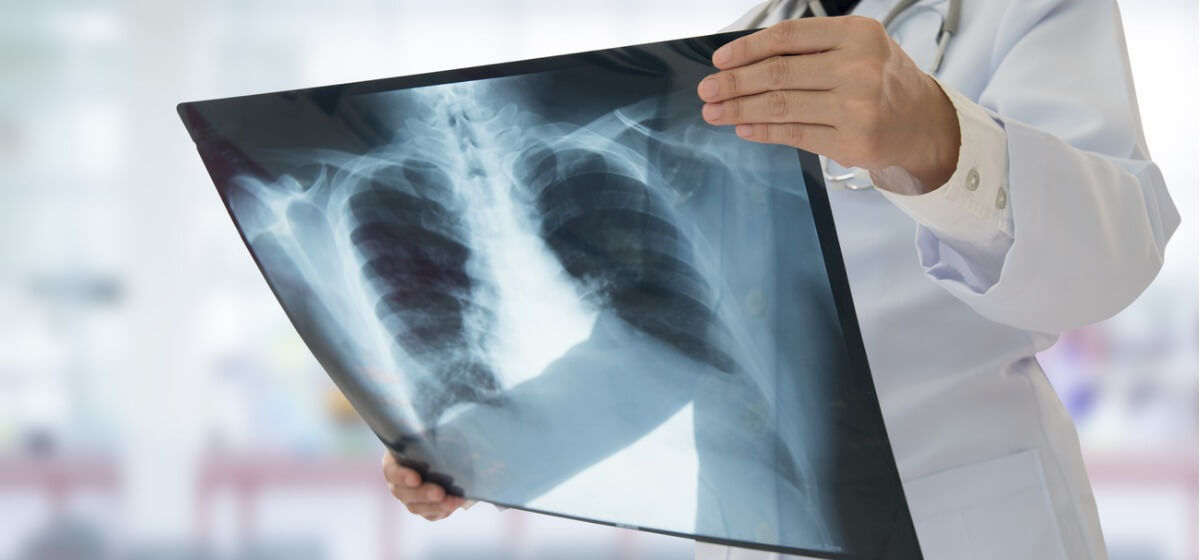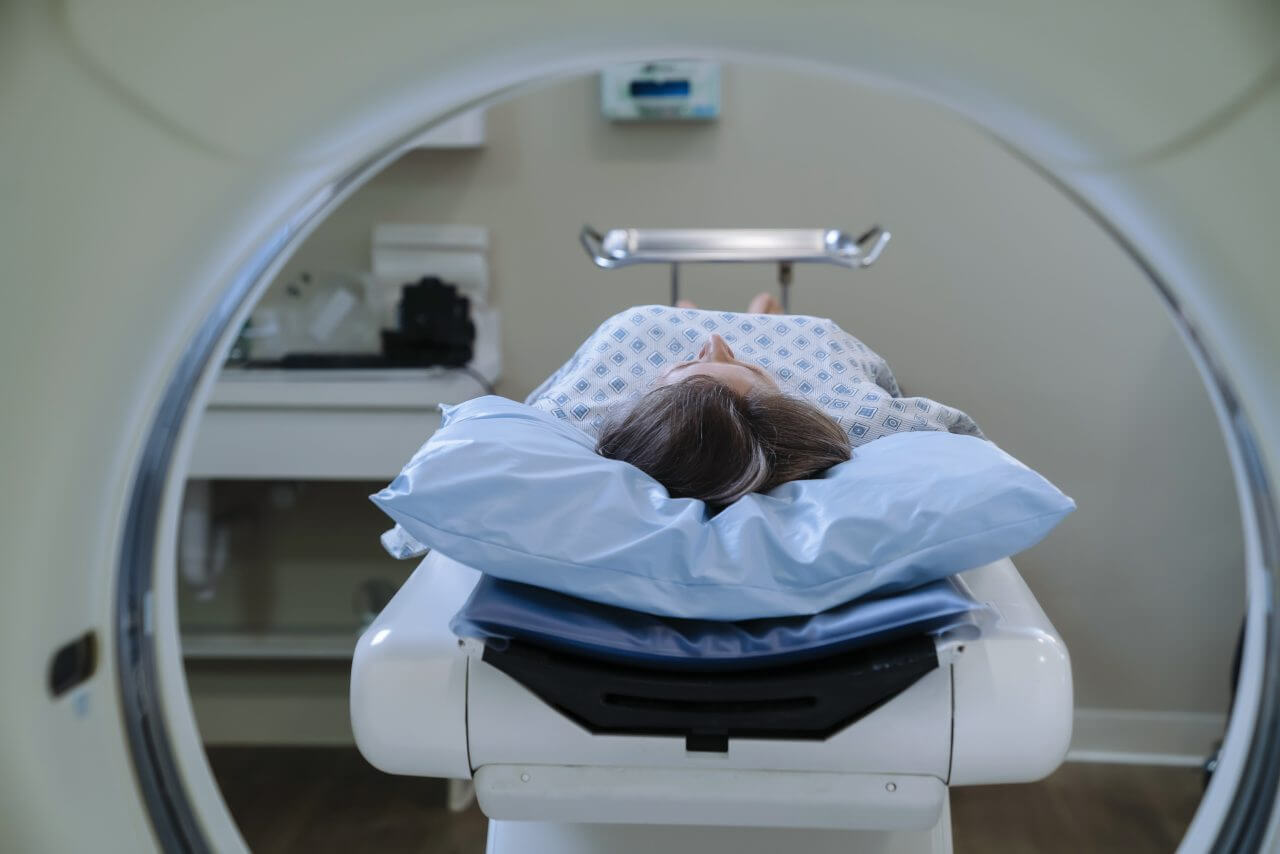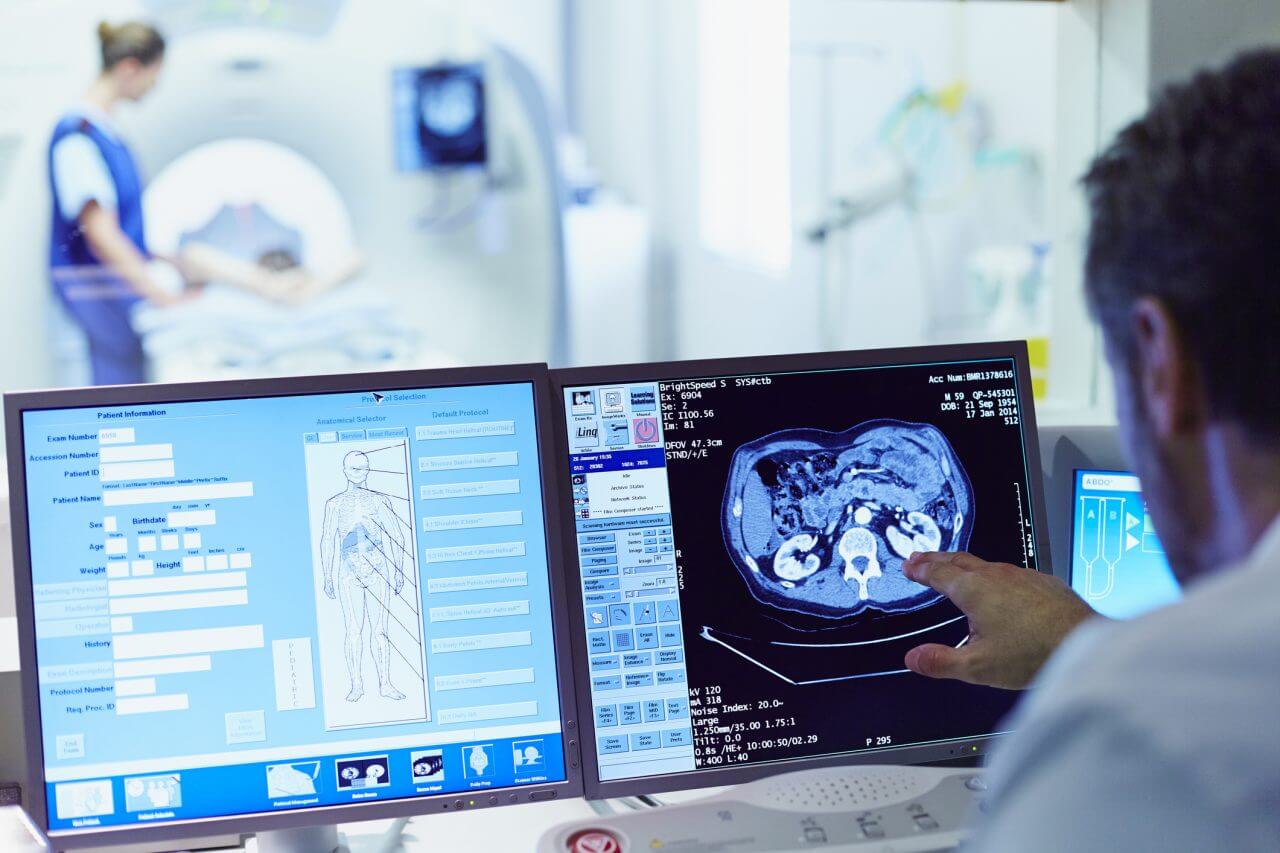What Imaging Procedures Use Contrast Dye?

Doctors use the images captured by medical imaging procedures like X-rays to diagnose medical conditions and check the progress of treatments. In some cases, technicians administer a solution called a contrast dye before starting the procedure.
You may also hear your care team refer to the solution as a contrast agent or medical imaging contrast. Contrast dyes help create images with enhanced detail and clearer distinctions between different types of organs, tissues, etc.
Several types of imaging procedures may use contrast dye, including:
- X-rays
- Fluoroscopy scans
- Computed tomography (CT) scans
- Magnetic resonance imaging
Contrast dyes can be injected into the body, taken by mouth, or inserted into the rectum.
Different Types of Contrast Dyes
The type of contrast dye that a technician administers varies based on the type of procedure. For example, X-ray and CT scan procedures use what’s called a radiocontrast agent. Often the element barium is the agent. It absorbs photons emitted by the X-ray or CT scanner, which enhances the quality of the images the machine captures.
MRIs use a different technology that’s focused on magnetic properties. Imaging centers commonly use the element gadolinium when performing MRI procedures. They inject it into the blood vessel, joint, or other structure that’s the subject of the scan.
Some tissues absorb the dye more than others. This contrast helps doctors spot subtle problems, like small tears or cartilage damage in joints.
Are Contrast Dyes Safe?
The contrast dyes imaging centers use are safe and improve the results of countless procedures performed around the country every day.
The administering of a contrast agent may make the total procedure time longer, but the enhanced images are worth the wait. After the scan, your body naturally eliminates the dye.
Contrast dyes can cause mild side effects such as nausea or diarrhea. However, most patients don’t experience side effects. It’s helpful to drink plenty of water after the procedure to help your body eliminate the dye.
In rare cases, patients have an allergic reaction to a contrast agent. Your care team does everything possible to minimize this risk, including learning about your medical history. They’ll ask you about medications you take, known allergies, and recent illnesses. It’s vital that you answer these questions as clearly and thoroughly as possible.
It’s also essential to be alert for any signs of an allergic reaction in the hours after your procedure. They include hives, rash, itchiness, and shortness of breath. If you experience any of these issues or have other concerns, you should contact your doctor or the imaging center.
If you have a severe allergic reaction, you should go to an urgent care center or emergency room right away.
Learn More About Medical Imaging Baptist Health
If you or someone you know is having an imaging scan, it’s helpful to know a little about the procedure. Your doctor will provide details about the process, but you can also learn more about imaging and diagnostic services at Baptist Health online.
Next Steps and Useful Resources
X-Ray Exposure: Safety, Risks, and Side Effects
CT Scan vs X-Ray
MRI vs MRA: What’s the Difference?
How to Prepare for an MRI



